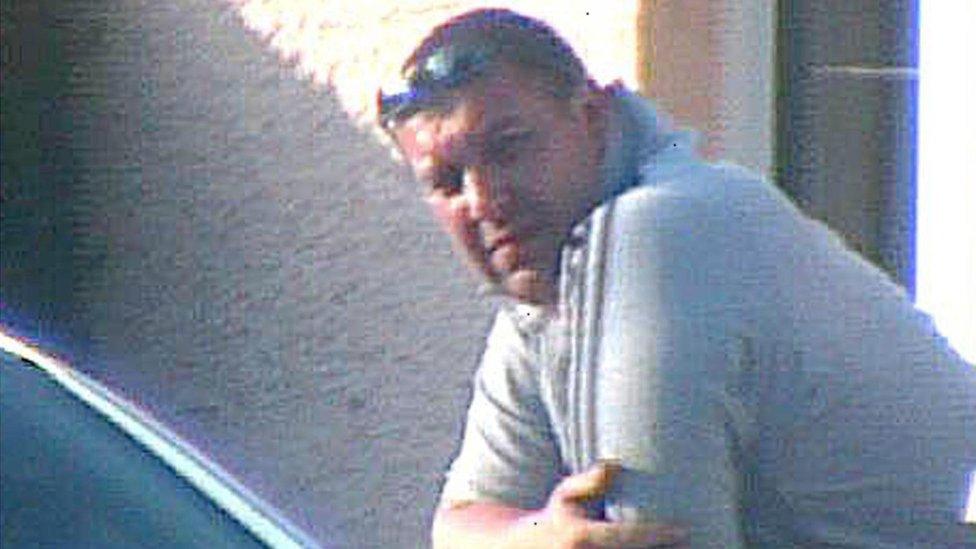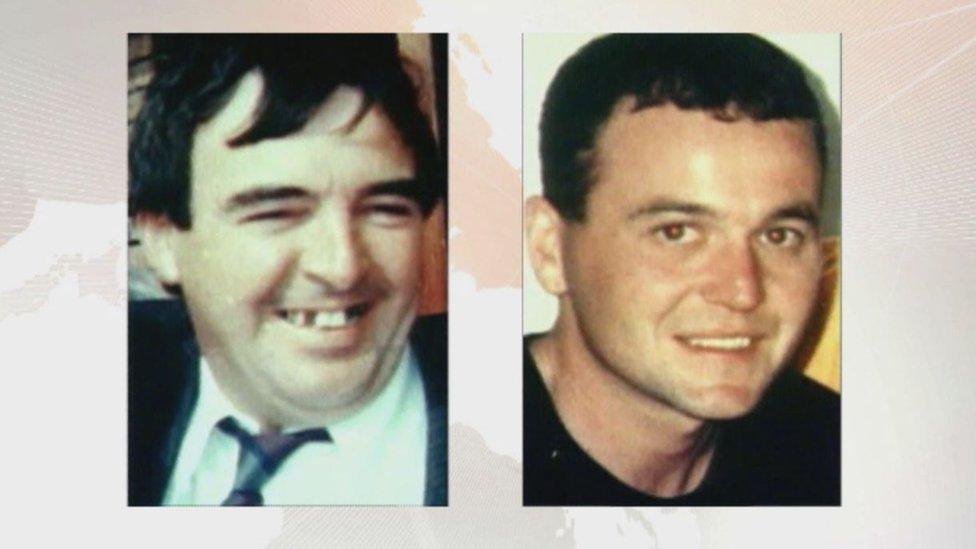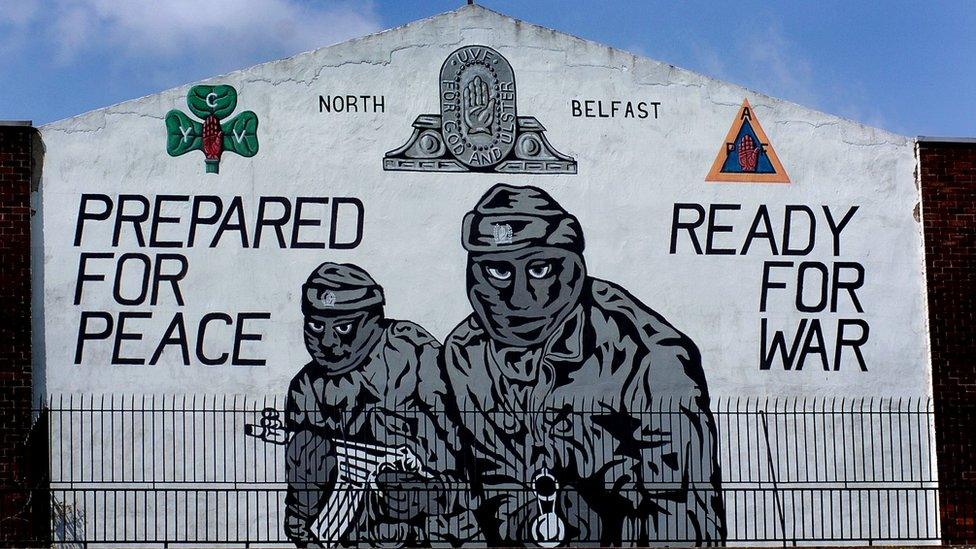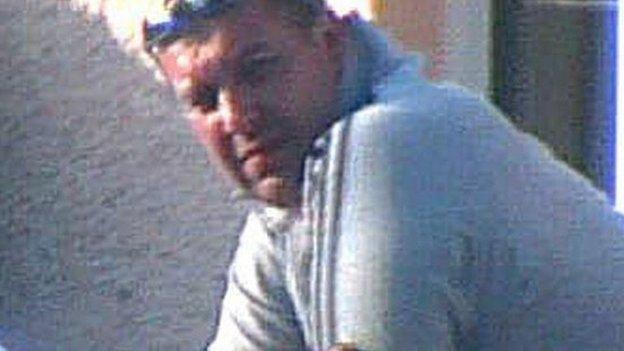UVF 'supergrass' Gary Haggarty released from prison
- Published

Gary Haggarty, 45, was sentenced for more than 200 offences, including five murders
Loyalist supergrass Gary Haggarty has been released from prison and put into a witness protection programme in a secret location outside Northern Ireland.
The former UVF leader was sentenced to six and half years just over three months ago after admitting over 500 offences, including five murders.
When he was sentenced in January the judge said he would normally have been sent to prison for 35 years.
But his term was reduced.
He had agreed to give evidence against others he said were involved in his crimes.
Haggarty also worked as a paid police informer during the period when most of his crimes were committed.
He is the most senior loyalist paramilitary ever to agree to become a supergrass.
He will now been given a new identity and put into a witness protection scheme under the supervision of the security service MI5.
The self confessed mass killer has agreed to return to Northern Ireland at a future date to be the star prosecution witness in the trial of a man accused of murdering two Catholics.
Workmen Gary Convie and Eamon Fox were shot dead as they ate lunch in a car parked near a building site in Belfast city centre in May 1994.

Eamon Fox and Gary Convie were shot dead while eating their lunch at a building site in 1994
He was released this afternoon after his lawyers threatened to take the prison service to court for not acting on a decision by the Sentence Review Commissioners on Wednesday.
The lawyers wrote to the Sentence Review Commissioners shortly after Haggarty was sentenced in January and said he should be released immediately due to time already served.
Taking into account the time spent on remand he has spent just over four years in jail.
The Commissioners issued a determination on Wednesday saying the application had been granted and that he could be released, after the Northern Ireland Office indicated it had no objections.
They said the prison service had the final say on when the release would happen.
A spokesperson for the PSNI said his release was a matter for the Sentence Review Commissioners and not the police.

Who are the UVF?
During the Troubles in Northern Ireland, the Ulster Volunteer Force (UVF) murdered more than 500 people.
The loyalist paramilitary group's campaign also claimed the lives of 33 people in bomb attacks in Dublin and Monaghan in 1974.

Haggarty was a former commander of an Ulster Volunteer Force unit in the Mount Vernon area of north Belfast
The organisation's name dates back to the Protestant force formed to oppose Home Rule in 1912.
The name was revived in 1966 as loyalists came together to oppose liberal unionism and what it saw as a rise in Irish nationalism, centred on the 50th anniversary of the 1916 Easter Rising.
The UVF's political wing, the Progressive Unionist Party (PUP), played a prominent role in the peace process and supported the 1998 Belfast Agreement.

'Unlawfully detained'
Solicitors Madden and Finucane wrote to the prison service this morning and said they believed Gary Haggarty was being "unlawfully detained".
They said the High Court in Belfast had been asked to convene an emergency sitting if Haggarty was not released today.
A short time later they were informed that Haggarty would be released.
It is understood he was taken out of Maghaberry by members of the Witness Protection Programme and flown out of Northern Ireland on a private plane.
The Public Prosecution Service is appealing the sentence given to Haggarty, arguing that it was unduly lenient.
But even if the appeal succeeds it would not have any impact on the time he would spend in prison as the most serious crimes, the 5 murders, were committed before the 1998 Good Friday Agreement.
The agreement means the maximum term for a terrorist offence committed before April 1998 is two years in prison.
Lawyers representing relatives of some of Haggarty's victims are also taking legal action against a decision by the PPS not to prosecute two Special Branch officers he claims were complicit in many of his crimes.
Five murders
Haggarty admitted murdering:
Catholic Sean McParland, who was shot while babysitting in Belfast in 1994
John Harbinson, a Protestant, who was handcuffed and beaten to death by a UVF gang on the Mount Vernon estate in north Belfast in May 1997
Catholic workmen Eamon Fox, 44, a father of six, and Gary Convie, 24, a father of one, shot dead as they had lunch together in a car in Belfast's North Queen Street in May 1994
Sean McDermott, a 37-year-old Catholic found shot dead in his car near Antrim in August 1994
He also admitted five attempted murders, including against police officers, 23 counts of conspiracy to murder and directing terrorism.
The judge also took into consideration a further 301 lesser offences in his judgement.
- Published11 May 2018

- Published13 December 2017
